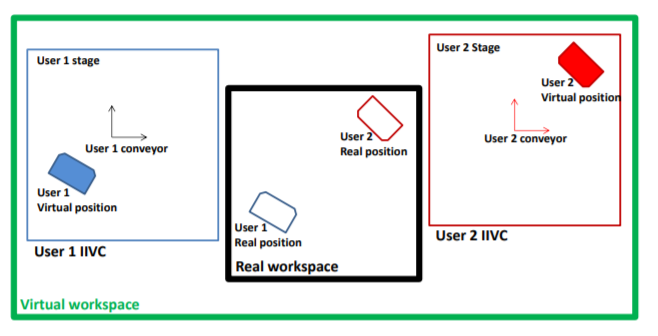Collaborators awareness for user cohabitation in co-located collaborative virtual environments
PubDate: November 2017
Teams: IRT b<>com
Writers: Jérémy Lacoche;Nico Pallamin;Thomas Boggini;Jérôme Royan
PDF: Collaborators awareness for user cohabitation in co-located collaborative virtual environments

Abstract
In a co-located collaborative virtual environment, multiple users share the same physical tracked space and the same virtual workspace. When the virtual workspace is larger than the real workspace, navigation interaction techniques must be deployed to let the users explore the entire virtual environment. When a user navigates in the virtual space while remaining static in the real space, his/her position in the physical workspace and in the virtual workspace are no longer the same. Thus, in the context where each user is immersed in the virtual environment with a Head-Mounted-Display, a user can still perceive where his/her collaborators are in the virtual environment but not where they are in real world. In this paper, we propose and compare three methods to warn users about the position of collaborators in the shared physical workspace to ensure a proper cohabitation and safety of the collaborators. The frst one is based on a virtual grid shaped as a cylinder, the second one is based on a ghost representation of the user and the last one displays the physical safe-navigation space on the foor of the virtual environment. We conducted a user-study with two users wearing a Head-Mounted-Display in the context of a collaborative First-Person-Shooter game. Our three methods were compared with a condition where the physical tracked space was separated into two zones, one per user, to evaluate the impact of each condition on safety, displacement freedom and global satisfaction of users. Results suggest that the ghost avatar and the cylinder grid can be good alternatives to the separation of the tracked space.

